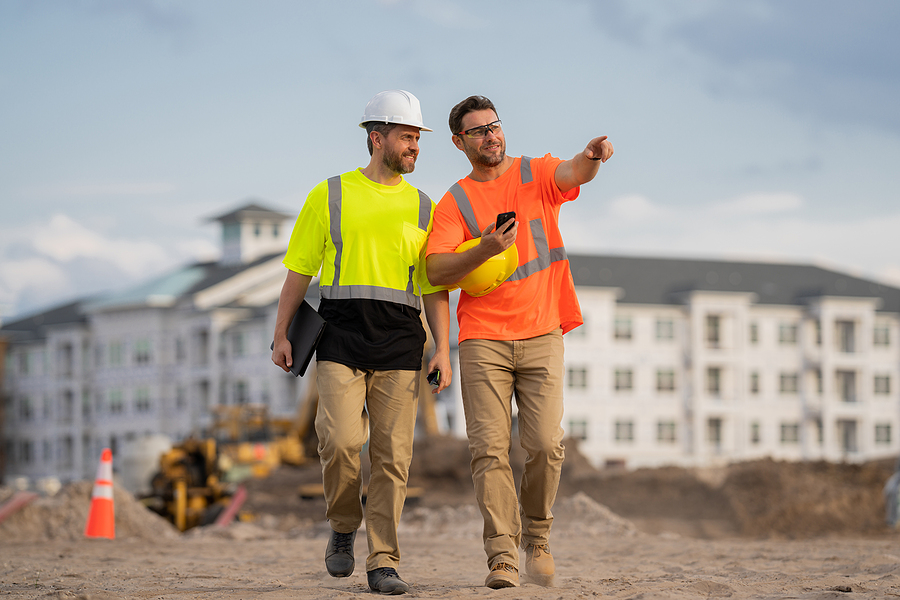
Construction sites are essential for building our infrastructure. But they can also be hazardous, leading to injuries with potentially devastating consequences for workers. Understanding safety measures is crucial to ensuring everyone goes home safely at the end of the day.
Unfortunately, accidents can happen, often with horrible results. If you suffered a construction site injury due to someone’s negligence, Sand Law may be able to help you obtain compensation. Please call or contact us online for a free evaluation of your case.
Statistics on Construction Site Injuries
There were 1,008 construction deaths and 169,200 injuries in 2021. Construction deaths made up nearly 20% of all workplace fatalities that year. The most common causes of construction deaths are slips, trips, and falls. These accidents accounted for more than 35% of fatalities in the construction industry in 2021.
Other common accidents on construction sites include the following:
- Falling objects (16.7% of construction injuries in 2020)
- Overexertion injuries (15%)
- Incidents involving worksite vehicles (12%)
- Harmful substance exposure (5%)
The Importance of Hard Hats & Other Safety Equipment
Hard hats and other safety equipment are your first line of defense against potentially life-threatening accidents on a construction site. These critical pieces of gear are designed to protect your head and body from a wide range of hazards, making them indispensable. Here are just a few reasons why you must always wear one.
Protection from Falling Objects
In a dynamic construction environment, there’s always a risk of falling objects. Tools, materials, and debris can unexpectedly plummet from heights. A hard hat acts as a sturdy shield for your head, reducing the chances of sustaining a traumatic injury. Without it, even a seemingly minor falling object can cause severe harm.
Shield Against Debris and Particles
Construction sites are often dusty and filled with airborne particles and debris. Safety glasses and face shields help safeguard your eyes and face from these hazards. An errant shard or speck of debris can lead to eye injuries, so wearing these protective items is imperative.
Respiratory Protection
Exposure to dust, fumes, and harmful chemicals is a daily reality on many construction sites. Respirators, masks, and other respiratory protective equipment help filter out these hazardous substances, ensuring you breathe clean air and avoid respiratory illnesses over time.
Ear Protection
Loud machinery, tools, and equipment can subject your ears to dangerously high noise levels, potentially leading to hearing loss. Earplugs or earmuffs are essential for preserving your hearing health, allowing you to work comfortably and safely no matter how loud the job site is.
Full-Body Protection
Beyond head and face protection, pay attention to the importance of wearing appropriate clothing and footwear. Durable work boots with reinforced toes safeguard your feet from falling objects or heavy materials. Flame-resistant clothing can protect you from burns and fires. Always ensure that your safety gear fits well and is in good condition.
Staying Safe from Slips, Trips, and Falls
Slips, trips, and falls are persistent hazards on construction sites, and their prevention requires constant vigilance. These are just some protective measures your company should have in place.
Fall Arrest Systems
When working at heights, such as on scaffolding or elevated platforms, it’s crucial to use fall arrest systems, including harnesses and lifelines. These systems are designed to stop a fall before it becomes a disaster, distributing the impact forces and preventing serious injury.
Scaffolding and Ladder Maintenance
Scaffolding and ladders are standard tools in construction, but they can also be sources of accidents if not properly maintained. Regularly inspect them for stability, structural integrity, and any signs of wear and tear. Ensure they are on stable ground and follow safety guidelines when ascending or descending.
Environmental Awareness
Pay close attention to your surroundings. Watch out for wet surfaces, uneven terrain, and clutter. Always keep work areas clean and organized to minimize these risks.
Safe Handling of Tools and Machinery
Proper training is non-negotiable when using construction tools and machinery. Understanding how to operate equipment according to its intended use and adhering to the manufacturer’s instructions is fundamental to minimizing risks.
In addition, tools and machinery must be in good repair and well-maintained. Regular inspections and servicing are crucial to prevent malfunctions or accidents resulting from faulty equipment.
Finally, employees should avoid taking shortcuts or improvising with tools and machinery. Use them precisely as they were designed, as deviation from their intended use can lead to accidents and injuries.
Reporting and Addressing Hazards
All workers should be vigilant and proactive in identifying and reporting potential hazards. Don’t assume someone else will care for the problem; your actions can save lives. Also, addressing minor issues immediately can prevent more significant accidents in the future. By reporting and mitigating hazards promptly, you contribute to a safer work environment for yourself and your colleagues.
What to Do if You’re Injured
In the unfortunate event that you’re injured on a construction site, taking the following steps is critical:
- Seek immediate medical attention: Regardless of the severity of your injuries, seek medical attention promptly. Even seemingly minor injuries can have hidden complications requiring professional assessment and treatment.
- Document everything: Thoroughly document the incident, injuries, and any contributing factors. Photographs, written descriptions, and witness statements can be invaluable for insurance claims or legal actions.
- Inform supervisors: Report the incident to your supervisors immediately. Doing so will create an official record of the incident. This record will be vital if you choose to take legal action.
- Legal advice: If your injury resulted from negligence or unsafe conditions on the construction site, consider seeking legal advice from a qualified attorney. They can help you understand your rights and potential legal options. They can also assist in pursuing compensation for medical expenses, lost wages, and pain and suffering.
Filing a Lawsuit Against the At-Fault Party
In cases of severe injury or negligence, you may need to file a lawsuit to protect your rights and seek fair compensation. A lawyer can assess your case’s merits and guide you through the legal process. They’ll help you determine if you have a valid claim against the at-fault party.
Contact an Experienced Construction Site Accident Attorney Today
Protecting yourself from injury on a construction site requires diligence, awareness, and adherence to safety measures. Construction sites can be hazardous, but with the right knowledge and precautions, you can significantly reduce the risk of accidents and injuries.
If you ever find yourself in a situation where you’ve been injured due to someone else’s negligence, reach out to an experienced construction site accident attorney with Sand Law for guidance and legal support. Schedule a free consultation by calling or contacting us online.

